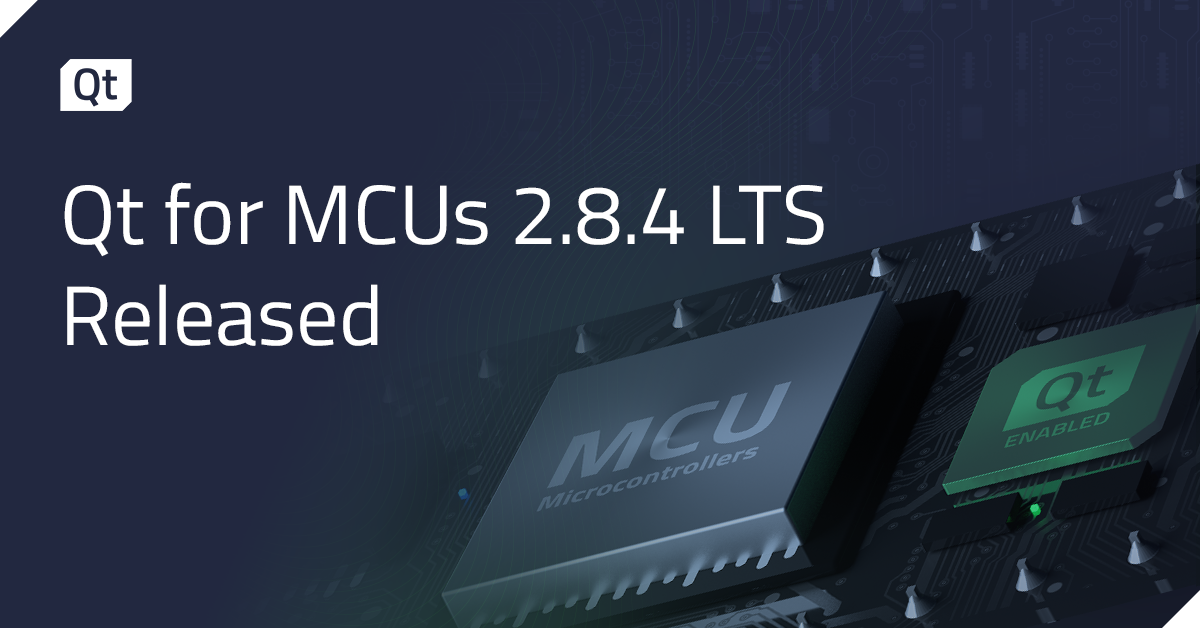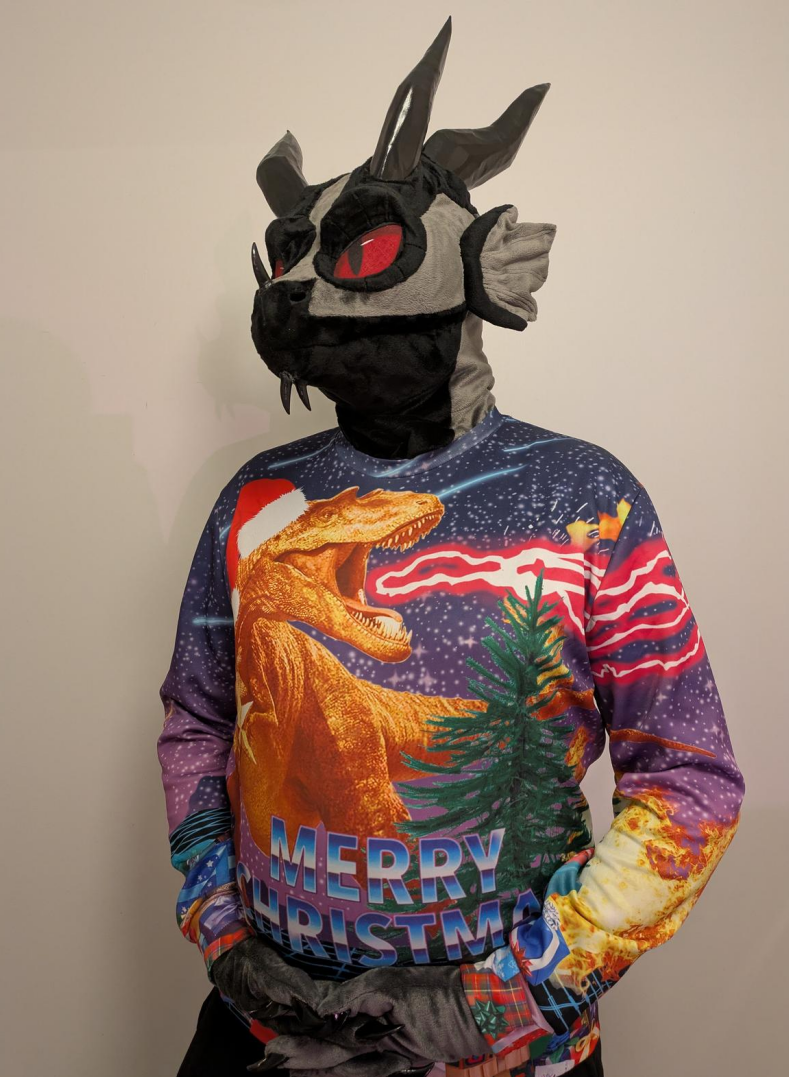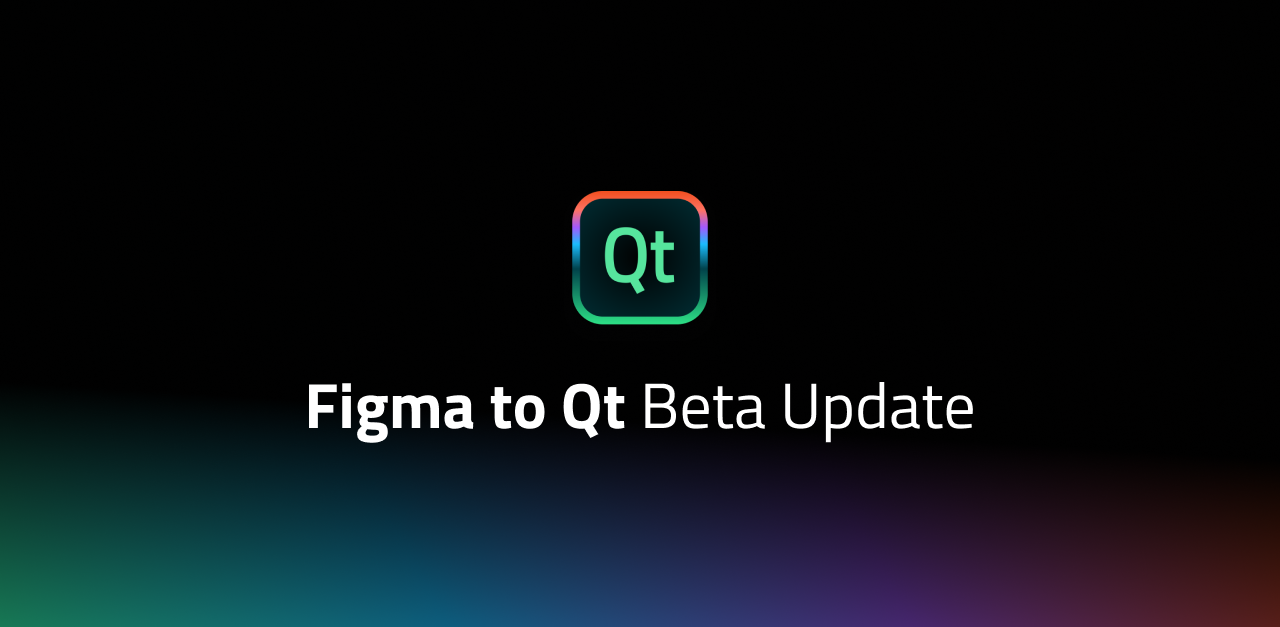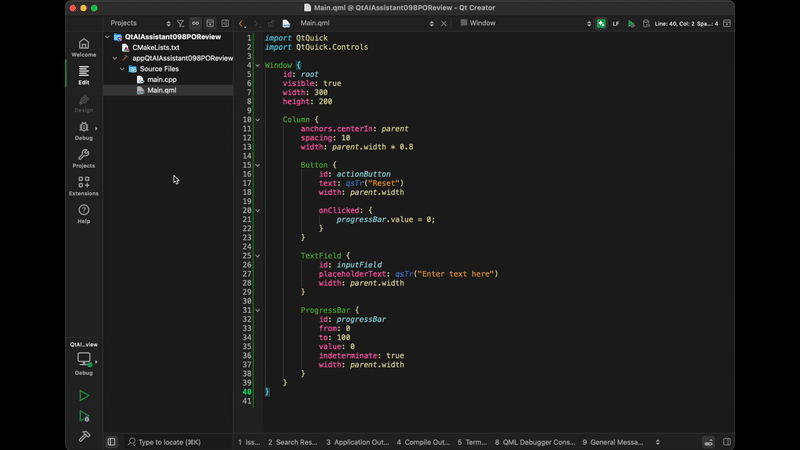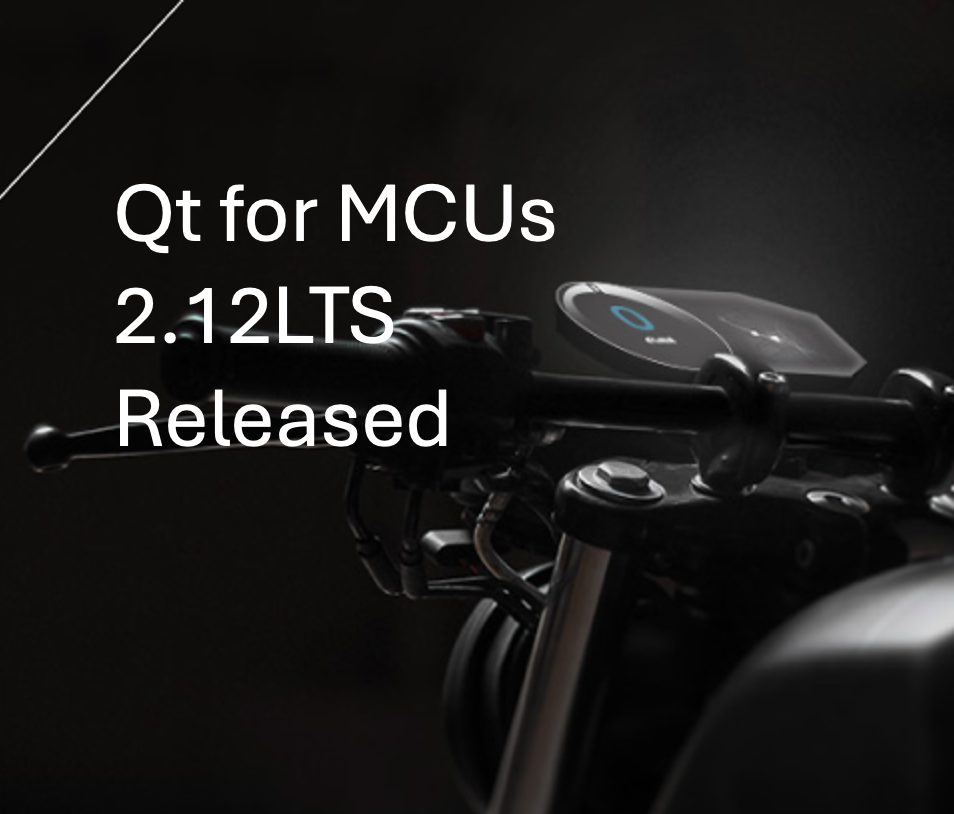23 Dec 2025
 Planet KDE | English
Planet KDE | English
Community Analysis: AGL BI Journey
This article focuses on the community analysis of the Automotive Grade Linux Business Intelligence study. It explains which data was analyzed, why individuals were excluded, and how understanding teams and organizations helps correctly interpret metrics from complex software production systems.
23 Dec 2025 6:00am GMT
22 Dec 2025
 Planet KDE | English
Planet KDE | English
Haruna 1.7
Haruna version 1.7.0 is released.

Windows version:
Availability of other package formats depends on your distro and the people who package Haruna.
If you like Haruna then support its development: GitHub Sponsors | Liberapay | PayPal
Feature requests and bugs should be posted on bugs.kde.org, ignoring the bug report template can result in your report being ignored.
Changelog
1.7.0
Known issues
The animation for the playlist can be stuttery/slow when playback is active. You can improve it by creating two custom commands that run on startup set override-display-fps 75 (replace 75 with your monitor's refresh rate) and set video-sync display-resample.
These don't work for variable refresh rate monitors.
Features
Playlist
- added advanced sorting and grouping (Muhammet Sadık Uğursoy)
- added context menu to open file in Hana (thumbnail generator, only if it's installed). Get it from flathub
- the last active playlist will be set as visible when starting the app
Other
- added replay gain settings (Muhammet Sadık Uğursoy)
- mpris thumbnail is only set for audio files, this allows the os taskbar preview to show the actual live window
- decreased the size of the play icon in the compact playlist
Bugfixes
- fixed database folder not being created
- fixed seekbar tooltip not updating when file changes and the mouse is not moved
- fixed deleting custom commands
- fixed saving last opened url
22 Dec 2025 8:00pm GMT
Qt for MCUs 2.8.4 is released
Qt for MCUs 2.8.4 LTS has been released and is available for download. It's the last patch release in the MCU 2.8 Long Term Support series. This patch release provides bug fixes and other improvements while maintaining source compatibility with Qt for MCUs 2.8 (see Qt for MCUs 2.8 LTS released). This release does not add any new functionality.
![]()
22 Dec 2025 11:55am GMT
21 Dec 2025
 Planet KDE | English
Planet KDE | English
Happy Holidays 2025!
Happy holidays everyone. Consider this as your holiday card from me. I will be taking short break from KDE stuff for now, though I will be around.
(I tagged KDE so that readers of planet have to see these, mwahaha.)
And happy new year 2026, let's hope it gets better from here.
21 Dec 2025 7:03pm GMT
20 Dec 2025
 Planet KDE | English
Planet KDE | English
Why doesn’t KMyMoney provide (old) binary versions
Lately, this question came up a few times on different channels and I felt to provide some background why things are the way they are.
The question arose most likely, because the latest KMyMoney development snapshot downloaded had a problem and users using that snapshots wanted to return to an earlier version which did not have this problem. At that point they just found out, that those older versions are not available anymore. Therefore, this post will provide some information how the KMyMoney project handles development and which services create binary versions and why older ones disappear.
For that purpose, I created the diagram shown below. It shows the participants in the game enclosed in the areas identified by dashed lines. Those are:
- KMyMoney developers provide the source code that makes up the application
- KDE project and their sys-admins running the CI/CD infrastructure which is used by the KMyMoney team to verify that the software compiles and builds in various environments (Linux, FreeBSD, Windows) and provides executable test versions (snapshots).
- The distribution maintainers who use released source code versions, add distribution specific changes and provide the installable package in the format for the distribution in question (e.g. RPM, DEB, AUR, TGZ, …).
The diagram also shows the means that the various players interact with, namely the GIT repository and the released source tar-balls. And last but not least, it marks the different steps in the processes of snapshots and releases (red circle with white number) which are explained below.

Step 1 is where a source code change happens. This may be a new feature or a bug fix. The developer commits this change to the GIT repository either into a specific branch (e.g. stable or master). I leave out feature branches which also exist but don't play a role here. Once step 1 is finished, automatically
Step 2 kicks in and the KDE CI/CD system starts a pipeline to build the software and run the automated tests in various environments. In case any of those builds or tests fails, the committing developer gets a notification via e-mail and has the chance to fix the problem by adding another commit in step 1 and thus restarting the process. If all builds and tests finish successfully, the last part of step 2 creates installable versions for different environments as snapshot version and continues with step3.
Step 3.stores the last successful build for download by developers, testers and interested users. Per KDE project policy only the last successful build is kept, which answers the title's question. Those snapshot versions will show a version x.y.z followed by an 8 digit hash in the Help/About KMyMoney dialog. This 8 digit hash identifies the commit (step 1) that this version is based on. Example: 5.2.1-05390aa93
Steps 1 through 3 can happen multiple times a day.
Step 4 happens, when the KMyMoney developers (or better release manager) create a release. A release does not only contain the source code in a compressed container format and an electronic signature as outlined above, but is also accompanied by the releases notes, change log and the public announcement on blogs, mailing lists, forums, etc. So a bit of work is involved. Step 4 also includes the change of the version number of KMyMoney (which is another step 1 commit) and creating a tag in the GIT repository on the commit that is used to create the tarball. Binaries created based on those tarballs therefore do not show a commit hash in the Help/About KMyMoney dialog.
Step 5 is performed by the release manager with the help of KDE sysadmin. KDE sysadmins take the files and add them to the KDE content delivery network which comprises of mirrors around the world.
Step 6 happens, when distribution maintainers take those source code files and compile and build them into installable packages for their distributions.
Steps 4 through 6 usually happen at a low frequency.
I hope that this explains how the project works and why things are the way they are.
Not shown in the above diagram is the work performed by one developer. He maintains a specific build for MS-Windows versions based on MinGW. Using cross-compiled versions allow to create KMyMoney for Windows including support for AqBanking (online banking features) which is not possible using the MSVC compiler suite. Since he basically uses the above mentioned steps 4, 5 and 6, the resulting binaries unfortunately do not contain the 8 digit hash in the Help/About KMyMoney dialog.
20 Dec 2025 10:35am GMT
KDE PIM Sprint 2025 in Paris
Last weekend I attended the annual(ish) KDE Personal Information Management (PIM) sprint in Paris, to discuss and work on KDE's infrastructure and applications for dealing with email, calendars and address books. And since this involved travelling, there was some Itinerary field testing as well of course.
PIM Sprint
The PIM sprint was hosted by enioka Haute Couture this time, in their offices in the middle of Paris, which happens to be located in a very appropriately named street for this.

With nine people attending (even if Kévin could only make it remotely in the end) it was actually a new record since moving that event to France many years ago. Even better, for about half of the attendees it was their first PIM sprint ever.

Topics
The following is by no means complete, see also the other reports on Planet KDE such as the one from Albert, as well as the notes on the sprint wiki page.
KMime framework
My focus was mainly on finally pushing the move of KMime to KDE Frameworks over the finishing line. While most review comments collected during Akademy have meanwhile been addressed, the request to make ownership transfers more explicit in the API is still requiring work. Not so much in KMime itself, but it's exposing sloppy ownership semantics in consumer code such the message composing code in messagelib. Attempting to untangling that has at least already lead to multiple memory leaks being found and fixed.
Message-IDs
We also reviewed the code to generate Message-ID headers in KMime, triggered by a recent forum thread. Message ids have to be globally unique, but the underlying specification and implementation predate UUIDs being widely available (yes, email is that old). Therefore this used to be a combination of a time-based random string and the host name of the sending machine.
That works but is not up to today's privacy standards anymore. Instead, the de-facto standard nowadays is to combine a UUID-based identifier with the domain of the sender address. The latter is just necessary to comply with the format and doesn't contribute to the uniqueness. KMail will now do the same.
While that is a minor detail, it's somewhat symptomatic for working on email-related code, trying to understand decisions made in specifications and code from last century and assessing the implications of changing any of that.
And more
Other topics discussed included:
- Retirement of the Kolab resource. That has been on the agenda since years, and a proposal exists since a while. That hasn't been implemented yet in the hope for a better solution which never materialized. Meanwhile a library this depends on is no longer buildable on current systems, so the Kolab resource has been silently disappearing from some distributions already, which is far worse than even the most low-effort orderly retirement.
- Flatpak packaging for the Akonadi stack, and the challenges for host integration that come with it. As sharing that between two Flatpak applications and/or to/from the host isn't really viable, the best we can do is probably a dedicated D-Bus interface for a separate platform calendar backend plugin in KCalendarCore, and use that for host integration like in the Plasma clock.
- Improvements to address auto-completion in KMail, in particular better defaults for filtering "no-reply" addresses.
We also spend some time debugging some weird synchronization issues that David R eventually tracked down to a very recent one-line change. This originally had been mis-attributed to the Sqlite backend for Akonadi while exploring whether that should become the default (with support for the other databases being dropped in the long run), but fortunately turned out to be entirely unrelated to that.
Travel
Travel ended up a bit adventurous and thus provided plenty of opportunity for observing Itinerary and Transitous under unusual circumstances.
- We need a more powerful alternative journey search that doesn't use the next change as a starting point, but every upcoming stop of the train you are currently on. MOTIS used to have this built-in as so-called on-trip queries, but it would also be possible to emulate this client-side. This helps with situations where the best alternative isn't just to take the next train after a missed connection, but to continue on the train you are on longer to connect onwards at a later stop.
- We should apply a lower-bound sanity check to realtime data in Transitous. In cases of more complex reroutings and detours Deutsche Bahn's own projection can contain times which go beyond what's technically, legally or physically possible.
- Also, crowd-sourced vehicle positions are equally valuable for operators where we usually have realtime data, to further support such sanity checks. Deutsche Bahn's onboard GPS is actually precise enough (outside of tunnels) to determine the exact track (and thus the speed rating) on OpenRailwayMap.
- Border points reported as dummy intermediate stops without a time or location still slip through on some backends and mess up our progress display in Itinerary.
- Parsing of international DB seat (re)bookings got fixed.
Another interesting observation from a routing perspective were passages in Paris (e.g. Passage Jouffroy or Passage des Panoramas) which in OSM terms are essentially footways with opening hours or conditional access. That is, those work as regular pedestrian ways during the day and are closed at night. OSM can model this for roads and routers can usually deal with that for vehicles, but I haven't seen this used yet for walking.
You can help!
Getting everyone together for a few days is extremely valuable and productive, and your donations to KDE .e.V. help to make that possible!
20 Dec 2025 10:00am GMT
This Week in Plasma: ambient light sensor support
Welcome to a new issue of This Week in Plasma!
This week many KDE contributors wound down their activities in preparation for some well-deserved rest. But that didn't stop the merging of some impactful work anyway!
This will be 2025's last This Week in Plasma post; I too will take a break next week. Happy holidays for those who celebrate, and I'll see you all in 2026!
Notable New Features
Plasma 6.6.0
Implemented support for automatic brightness adjustment on devices with ambient light sensors! (Xaver Hugl, KDE bug #502122)
Notable UI Improvements
Plasma 6.5.5
Improved KRunner's search matching algorithms to prioritize partial matches at the beginning of apps' names, descriptions, and keywords. This should fix issues like searching for "ala" and getting "KAlarm" as the top match instead of "Alacritty". (Harald Sitter, KDE bug #512400 and KDE bug #512399)
Plasma 6.6.0
Added a workaround for Windows games with HDR support to make sure their colors still look good when run in WINE or Proton. (Xaver Hugl, KDE bug #509114)
Spectacle's notifications about screenshots now include an "Open Containing Folder" button, and persist in the history if you don't manually close them. This should make it harder to miss where your screenshots got saved to. (Noah Davis, Spectacle MR #499)
Fixed an issue in Spectacle that made the bottom toolbar in Rectangular Region mode get cut off when the selected region is close to the bottom of a screen with certain screen setups. (Mario Roß, Spectacle MR # 498)
System Settings' Wi-Fi & Networking page now shows information about the connected Wi-Fi networks, just like the System Tray popup does. (Alexander Wilms, KDE bug #471071)

Discover now shows available updates within the app in a fancier-looking way. (Taras Oleksyn, KDE bug #509926)

Notable Bug Fixes
Plasma 6.5.5
Disabling visual customization of Plasma via the Kiosk system now hides relevant buttons on System Settings' Quick Settings page. (Nicolas Fella, KDE bug #511381)
6.6.0
Made opacity window rules work for picture-in-picture windows. (Vlad Zahorodnii, KDE bug #513374)
Frameworks 6.22
Fixed a large number of clipboard-related issues on Wayland. (David Edmundson and David Redondo, kguiaddons MR #191)
The next release of WallpaperEngineKDE
Fixed one of the most common crashes in Plasma, caused by using the 3rd-party WallpaperEngineKDE wallpaper plugin. (catsout, wallpaper-scene-renderer Issue #13)
Other bug information of note:
- 5 very high priority Plasma bugs (same as last week). Current list of bugs
- 59 15-minute Plasma bugs (up from 55 last week). Current list of bugs
Notable in Performance & Technical
Plasma 6.5.5
Fixed an issue that prevented KWin from using direct scanout when the Battle.net launcher is open. (Xaver Hugl, KDE bug #513203)
Plasma 6.6.0
Reduced frame drop on monitors with extremely high refresh rates. (Xaver Hugl, KDE bug #513296)
Implemented the ability for portal-based applications to actively inhibit logout, for example because they have unsaved documents open. (David Edmundson, xdg-desktop-portal-kde MR #391)
How You Can Help
Donate to KDE's 2025 fundraiser! It really makes a big difference. In total, KDE has raised over €300,000 during this fundraiser! The average donation is about €25. KDE truly is funded by you!
This money will help keep KDE strong and independent for years to come, and I'm just in awe of the generosity of the KDE community and userbase. Thank you all for helping KDE to grow and prosper!
If money is tight, you can help KDE by directly getting involved. Donating time is actually more impactful than donating money. Each contributor makes a huge difference in KDE - you are not a number or a cog in a machine! You don't have to be a programmer, either; many other opportunities exist.
To get a new Plasma feature or a bugfix mentioned here, feel free to push a commit to the relevant merge request on invent.kde.org.
20 Dec 2025 7:01am GMT
19 Dec 2025
 Planet KDE | English
Planet KDE | English
Web Review, Week 2025-51
Let's go for my web review for the week 2025-51.
Do we really need big data centers for AI?
Tags: tech, ai, machine-learning, gpt
They produced Apertus, and now this for the inference. There's really interesting work getting out of EPFL lately. It all helps toward more ethical and frugal production (and use) of LLMs. Those efforts are definitely welcome.
https://actu.epfl.ch/news/do-we-really-need-big-data-centers-for-ai/
AI's Unpaid Debt: How LLM Scrapers Destroy the Social Contract of Open Source
Tags: tech, ai, machine-learning, gpt, copilot, criticism, foss, commons, copyright, community
This is really a big problem that those companies created for Free Software communities. Due to the lack of regulation they're going around distributing copyright removal machines and profiting from them. They should have been barred from ingesting copyleft material in the first place.
I'm Kenyan. I Don't Write Like ChatGPT. ChatGPT Writes Like Me.
Tags: tech, ai, machine-learning, gpt, colonialism, history
There is definitely something tragic at play here. As we're inundated in fake content, people are trying to find ways to detect when it's fake or not. While doing so we deny the humanity of some people because of their colonial past.
https://marcusolang.substack.com/p/im-kenyan-i-dont-write-like-chatgpt
20 Years of Digital Life, Gone in an Instant, thanks to Apple
Tags: tech, apple, infrastructure, cloud, security, failure
This is what you're signing up to with such ecosystems. Can't use those for backups even though people are led this way. Sure technically the data is safe on their infrastructure, but is your access to said infrastructure guaranteed? This gilded cage looks less like a gift when you loose access.
https://hey.paris/posts/appleid/
CS Unplugged
Tags: tech, teaching
Looks like a fun way to introduce the next generation to computer science basics.
https://www.csunplugged.org/en/
ty: An extremely fast Python type checker and language server
Tags: tech, python, type-systems
This is definitely an exciting new option for Python development.
Secure your Rust projects and significantly improve the developer experience with Dev Containers
Tags: tech, programming, containers, security, supply-chain
Indeed, we might want to use dev containers more widely in the profession. If you're developing something for the desktop you're out of luck though.
https://kerkour.com/rust-devcontainers
How to Learn Embedded Rust for Beginners
Tags: tech, rust, embedded
Definitely quite some nice resources in the Rust world for people interested by development for embedded systems.
https://blog.implrust.com/posts/2025/12/how-to-learn-embedded-rust/
The Rule of Zero revisited: The Rule of All or Nothing
Tags: tech, c++, programming
Definitely the right rule to follow to designing classes in C++ in my opinion.
https://arne-mertz.de/2015/02/the-rule-of-zero-revisited-the-rule-of-all-or-nothing/
Bloom filters
Tags: tech, performance, caching, mathematics
Nice explanation of what Bloom filters are for and how they work.
https://eli.thegreenplace.net/2025/bloom-filters
Collection Pipeline
Tags: tech, design, pattern
This is a good pattern, use it! This article does a good job showing variants and where it makes sense to reach out for it.
https://martinfowler.com/articles/collection-pipeline/
What an error log level should mean (a system administrator's view)
Tags: tech, logging
Use the log levels responsibly in your applications. Indeed, what are at most warnings are too often reported as errors.
https://utcc.utoronto.ca/~cks/space/blog/programming/ErrorsShouldRequireFixing
A History of Source Control Systems: SCCS and RCS (Part 1)
Tags: tech, version-control, history
Looks like that following parts were never written. This piece is interesting by itself though, it's nice to have a record of the early times of SCCS and RCS.
https://experimentalworks.net/posts/2024-03-18-a-history-of-vcs-part1/
How do graphics drivers work?
Tags: tech, kernel, linux, graphics, hardware, gpu
Nice little intro of the various components you need for graphics drivers. It's very much geared toward how it's organised on Linux.
https://timur.hu/blog/2025/how-do-graphics-drivers-work
Trust Artist Pair Programming Economics
Tags: tech, tdd, pairing
This is an interesting way to frame the conversation around pair programming (and TDD even if only alluded to here).
https://trustartist.com/2015/01/27/pair-programming-economics/
TDD and Complexity
Tags: tech, tests, tdd, complexity
Finding the right level of abstraction for the tests is important indeed. It helps keep them useful longer. Scope and complexity are linked and can help find the right balance of tests.
https://medium.com/@davidihunt/tdd-and-complexity-1bbd5ca51ee7
Norris Numbers
Tags: tech, quality, reliability, maintenance, team, organisation
This is something I've definitely seen indeed. There are clearly a threshold effect in the amount of code you have to manage. Solutions working at smaller amounts don't work anymore a couple of order of magnitudes higher, and vice versa.
https://www.teamten.com/lawrence/writings/norris-numbers.html
Splitting user stories - the hamburger method
Tags: tech, agile, estimates
Interesting method to split stories which are proving difficult to split.
https://gojko.net/2012/01/23/splitting-user-stories-the-hamburger-method/
Not Everything Needs to Be a User Story: Using FDD Features
Tags: tech, agile, project-management, product-management
For technical tasks, the user stories common structure (the "Connextra format") is not adequate. We can indeed take inspiration from other long forgotten agile approaches for alternatives. I particularly like this one, and it works for user stories as well in my opinion.
https://www.mountaingoatsoftware.com/blog/not-everything-needs-to-be-a-user-story-using-fdd-features
Victim of Success: Dark Scrum
Tags: tech, agile, business
Was it all going to end up as a management fad? I'd say yes. It's not to say the values and principles in the manifesto are useless… but if something gets successful you'd better have guardrails on how it'll be warped. It didn't happen here.
https://ronjeffries.com/articles/016-09ff/victim/
Lean Software Development: The Backstory
Tags: tech, agile, kanban, project-management, craftsmanship, devops
Interesting history outlook on where Lean Software Development is coming from. The focus on flow efficiency rather than resource efficiency is definitely key.
https://www.leanessays.com/2015/06/lean-software-development-history.html
So You Want To Manage A Product?. What no one tells you about the role
Tags: tech, product-management
This is a good introduction to what product management really entails.
https://medium.productcoalition.com/so-you-want-to-manage-a-product-c664ba7e5138
How to Use Persona Empathy Mapping
Tags: tech, ux, design
Looks like a nice tool for UX design and getting insights from conversations with users.
https://uxmag.com/articles/how-to-use-persona-empathy-mapping
The Ten (and a half) Commandments of Visual Thinking
Tags: sketchnotes, problem-solving
Good advice to get (back) into sketch noting or visual thinking.
https://www.theartof.com/articles/the-ten-and-a-half-commandments-of-visual-thinking
On Leadership and Being a Lead
Tags: tech, tech-lead, leadership
It's indeed not just about the label. It's more about behaviour.
https://thekua.com/atwork/2014/10/on-leadership-and-being-a-lead/
Why People Really Quit - And How Great Managers Make Them Want to Stay
Tags: management
That's one of those pieces where the clear cut categories look a bit like caricature. That said, that gives an idea of the kind of posture one should try to reach to be a good manager.
People who make you feel stupid…
Tags: motivation, productivity, team
It's fine to surround yourself with people smarter than you. It's a good thing… except if they are competitive. Then it can become a curse and kill your motivation.
https://lemire.me/blog/2013/10/29/people-who-make-you-feel-stupid/
How to be exceptional at anything
Tags: life, learning
I definitely agree with this. It's all about the grunt work and attention to details. This it's easier to be good at something when you become obsessed.
https://abdulhamidhassan.com/post/802459222214410240/how-to-be-exceptional-at-anything
How not to say the wrong thing
Tags: life, empathy
It's something I've been trying to practice for year when someone is in a crisis. Seeing the situation as concentric circles of people around the one affected is a simple and powerful idea. Of course, we're humans and sometimes we'll fail at following this advice. At least that gives a good idea about why we'll likely get offended reactions.
https://www.latimes.com/opinion/story/la-timeless/how-not-to-say-the-wrong-thing
If the Moon Were Only 1 Pixel - A tediously accurate map of the solar system
Tags: science, physics, astronomy, data-visualization
A nice way to try to grasp the scale of the solar system. We hardly realize the amount of empty space.
https://joshworth.com/dev/pixelspace/pixelspace_solarsystem.html
Bye for now!
19 Dec 2025 11:08am GMT
18 Dec 2025
 Planet KDE | English
Planet KDE | English
Kdenlive 25.12.0 released
The Kdenlive team is happy to announce the release of version 25.12.0, just in time for the holiday season. For this release, we concentrated on improving the user experience. Many of these changes were discussed during our very productive Berlin sprint last September, where the team met for three days of brainstorming.
Interface and Usability
Docking System
We introduced a new, more flexible docking system, allowing you to group the widgets you want together or easily show/hide them on demand. Each layout is now saved in its own file, opening the possibility for sharing. It is also now saved inside the project file, so when reopening a project the layout used when saving it is loaded and you are immediately ready to continue where you left off editing! The downside is that existing layouts are not compatible, so that you will need to recreate your custom layouts.
Welcome Screen
We introduced a Welcome Screen to improve the experience for new users, and add some handy shortcuts for everyone. With your feedback this will evolve in the future.
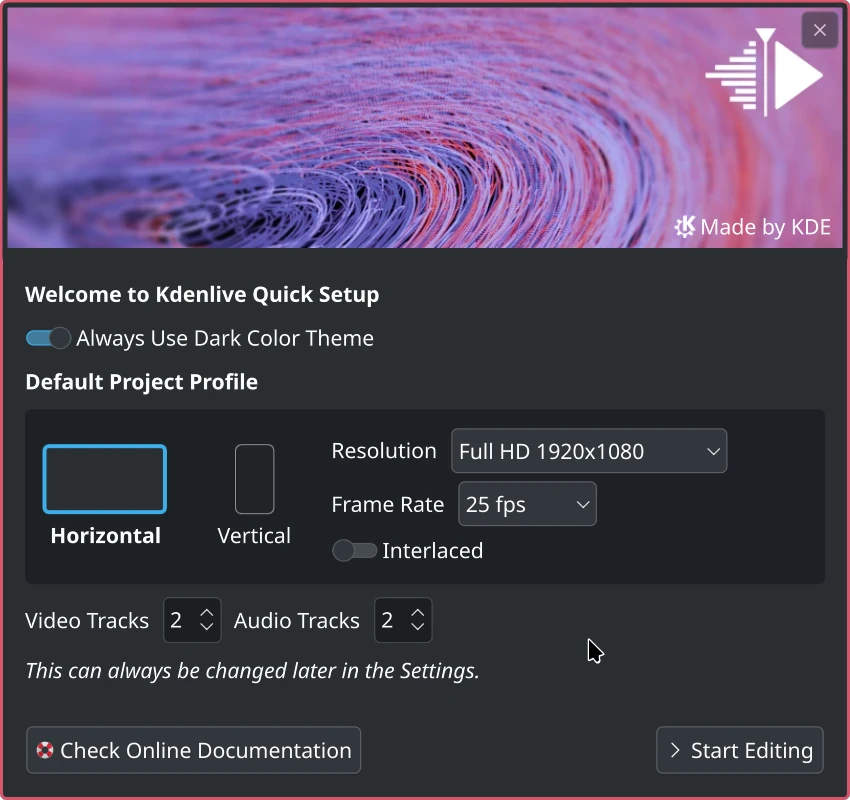
Along with the Welcome Screen, we introduced a vertical layout and optional safe areas to improve editing of 9:16 videos.
Menu Restructuring
Part of a long running discussion in the team, the menus were re-organized to make them more intuitive. Our long-time users may be confused initially (hopefully not for long, though), but we tried to follow some of the conventions in the professional editing world. For example, we regrouped all file related actions like Render and the Project Settings in the File menu. There might be a few adjustments in the upcoming releases, but the most important changes are in.
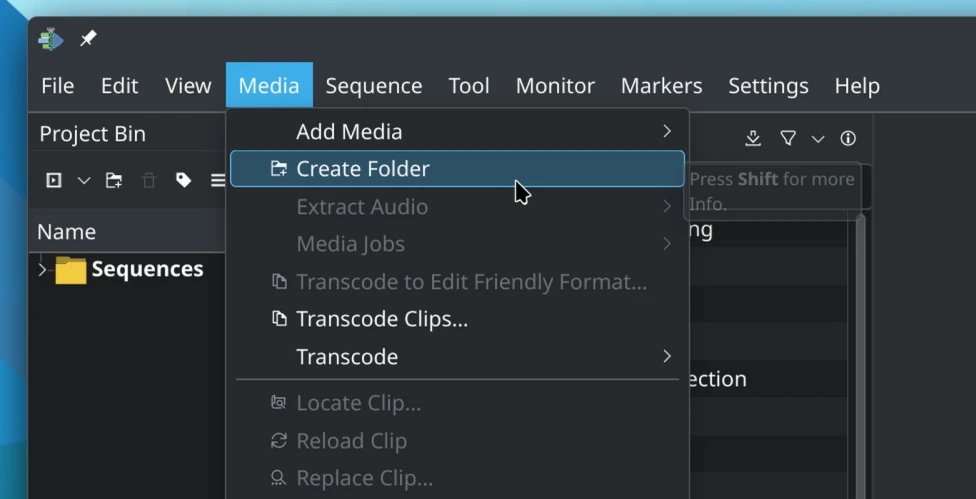
Thanks to users and translators feedback, we were able to fix several parts of the user interface that were not picked up properly for translation, making Kdenlive easier to use in your native language.
Monitor
We revamped the monitor view of audio, with a minimap on top allowing to intuitively zoom parts of the audio. (audio monitor)
Markers
For consistency and to avoid confusion, we renamed timeline guides to markers, since the term guide was used interchangeably and therefore confusing, and they were in fact markers for a sequence clip. Markers can now have a duration that is shown in the timeline, and can be dragged in the timeline from the Markers list.
Other Highlights
Major Bug Fixes
- We fixed more than 15 crash reports
- Windows: Fix render failure when user name contains special characters
- Fix project corruption when copy-pasting a sequence or project file between projects
Packaging
- We fixed the VAAPI support in AppImage, allowing for faster decoding and render time
- Several updates made it into our binaries, like Qt 6.10.1 and FFmpeg 8.0
Last Minute Fixes
Several fixes that will be in the next release have already been included in the 25.12.0 binaries available on kdenlive.org. If you installed Kdenlive from your Linux distro, you will get those fixes with version 25.12.1 (release scheduled for January 2026).
Click to see the list of last minute changes.
- Fix xmlgui related crash starting an older Kdenlive version (< 25.08.3). Commit.
- Keep duration info when moving ranged markers. Commit.
- Don't load Kdenlive in the background if welcome screen is displayed to avoid busy cursor / greyed out screen on Wayland. Commit.
- Fix window does not appear after crash and no welcome screen. Commit.
- Ensure we cannot call a Welcome Screen action before it is connected. Commit.
- FIx possible crash in Welcome Screen trying to open profile or file when mainwindow was not ready yet. Commit.
- Fix changing keyframe type for multiple keyframes not working. Commit. Fixes issue #2104.
- Add AMF encoding profile for Windows. Commit.
- Don't allow saving a custom effect with the name of an existing effect. Commit.
- Fix horizontal editing layout not loaded. Commit.
- Hsvhold similarity must be > 0. Commit.
- Fix copy paste resets keyframe type. Commit. Fixes bug #513053.
- Fix editing transform on monitor discards opacity. Commit. Fixes issue #2108.
- Don't check for readOnly in QStorageInfo on Mac. Commit.
- Fix app not opening after crash and opening project from command line. Commit.
- Don't incorrectly show warning about hidden monitor. Commit.
- Fix project layout not correctly restored if opened from Welcome Screen. Commit.
The full changelog for 25.12.0 is available below.
Give back to Kdenlive
Releases are possible thanks to donations by the community. Donate now!
Need help ?
As usual, you will find very useful tips in our documentation website. You can also get help and exchange your ideas in our Kdenlive users Matrix chat room.
Get involved
Kdenlive relies on its community, your help is always welcome. You can contribute by :
- Helping to identify and triage bugs
- Contribute to translating Kdenlive in your language
- Promote Kdenlive in your local community
For the full changelog continue reading on kdenlive.org.
18 Dec 2025 11:16am GMT
Update on KDE Home Automation (KIOT)
This is a effectively a guest blogpost where I, as usual, take the credit for the work someone else has done.
Last year ago set out making a home automation <--> Desktop Linux bridge over the Christmas holidays.
The idea is that if you're using home automation your PC that you're in front of has a lot of important information that can be used for adjusting automations; are you in a call, are your headphones on, and so on. I made a small daemon, named Kiot (derived from "KDE Internet of Things") that exposes this information about your PC to Home Automation software, like Home Assistant.
It worked well enough for all my use-cases, so after a bit of initial buzz and a few drive-by fixes it fell to the wayside whilst I worked on other things.
In the last month it got a new contributor, Odd Østlie (TheOddPirate) who has been like a rocket ship of new features; and a bit of a community with another member being active in testing and feedback.
We now track and expose:
-
bluetooth
-
audio devices, volume control and selection
-
battery states for laptops and wireless peripherals
-
gamepad detection
-
active window information
-
media player/mpris connection
With more integrations in pull requests.
There's also the start of a configuration UI, so there's no messing about with configuration files.
I'll do another post once we've made a 0.1 and a flatpak, but if you're interested in KDE + home automation, go check out his work at https://github.com/davidedmundson/kiot .
18 Dec 2025 8:30am GMT
17 Dec 2025
 Planet KDE | English
Planet KDE | English
Figma to Qt: The Fastest Way to Bring Figma Designs to the Product
Let's talk about Figma to Qt - the plugin that closes the gap between Figma designs, Qt, and the final product. After launching our first public beta in September, we're back with powerful new updates. Here's what the plugin can do today.
![]()
17 Dec 2025 1:58pm GMT
KDE PIM Sprint in Paris
Last weekend I attended this year's edition of the KDE PIM Sprint which, this time, took place in Paris.
I arrived in Paris around 1 p.m. and first walked from Gare du Nord to the Île de la Cité to have a look at the reconstructed roof of Notre Dame. Then I checked in at my hotel and after a brief rest I went to the sprint venue, the office of enioka. There I was greeted by one of our hosts for the weekend and by a few KDE PIMsters who had already taken over the meeting room.
After firing up my computer, KMail complained that it couldn't access one of my IMAP accounts. The error said "authentication failed" and a second error message claimed that access to KWallet (which stores the passwords of the IMAP accounts) was denied. Using the website of the mail provider I verified that my credentials still work. Adding the IMAP account a second time didn't help. Still the same errors. And a look at KWallet also didn't give me a clue why it should deny access to the password of one of my IMAP accounts when two other IMAP accounts worked. Since access to this IMAP account wasn't that important during the KDE PIM sprint I decided not to waste more time on this problem. This proved to be a good decision because once I was back at home the account magically worked again. I blame weird security measures by the email provider.
In the meantime more people had arrived and we went for dinner. Afterward we went back to the venue and, now that most people were there, we went over the list of topics from last year's KDE PIM Sprint. Some progress has been made since the last sprint but many topics didn't see much work done. Any and all help is welcome!
Originally I planned to look into a bug that's been haunting me for some time: KMail shows seemingly random counts of unread messages in the folder list that have little to do with the actual number of unread messages in those folders. Because I'm using the latest stable versions of almost all KDE software (as provided by openSUSE Tumbleweed) I started to build the release/25.12 branch of KMail and its 30+ KDE PIM dependencies. This took the rest of Friday evening and part of Saturday morning. Shortly before midnight we called it a day.
On Saturday morning, after a joint breakfast in the office, we discussed a few more topics from our agenda. After that I decided to scratch my original plan and, instead, to help with making the KMime library fit for becoming a KDE Framework. I created a few MRs to replace the usage of bool parameters in the API with enums. Then I looked into adapting the users of KMime to the new API. Unfortunately, this proved more painful than expected because KDE PIM does not only depend on the master branch of everything else in KDE PIM (which I was very well aware of) but a lot of the KDE PIM projects also depend on the master branch of the ktextaddons library which is a kind of intermediate library between KDE Frameworks and KDE PIM with its own release schedule. For many of the KDE PIM projects I could simply lower the required version of ktextaddons to the latest stable release (as shipped by Tumbleweed), but for pimcommon this hack didn't work anymore because it used a new header from ktextaddons master. By then it was already Sunday afternoon and anyway time for me to pack my stuff.
On my way to Gare du Nord I passed by Sacré Cœur on Montmartre where to my surprise a choir of Santa Clauses and Santa Claudettes was performing French Christmas songs.
In conclusion, I got more useful work done during this sprint than during some other sprints, although the dependency requirements of KDE PIM annoy me a lot. I've been involved in KDE PIM for 25 years now although, admittedly, I rarely contribute to it in my spare time since I started to code for a living. To a large part the reason for this is that it would cost way too much of my spare time to build all of KDE PIM all of the time.
Thanks to enioka for hosting us and to Kevin for organizing the sprint. And many thanks to those of you donating to KDE which makes these sprints possible.
17 Dec 2025 12:00am GMT
16 Dec 2025
 Planet KDE | English
Planet KDE | English
Making Your Prompts Personal – Qt AI Assistant 0.9.8 Released!
The latest Qt AI Assistant release adds custom coding instructions to every prompt, reducing the effort required to implement your own coding preferences or the project's coding conventions. Furthermore, the 0.9.8 release also introduces support for Google's Gemini 3 Pro Preview LLM and OpenAI's GPT-5.1 LLM.
![]()
16 Dec 2025 9:32am GMT
Automotive Grade Linux Business Intelligence Journey: Introduction
This study applies business intelligence to Automotive Grade Linux, offering a data-driven view of its software production system. By analyzing activity, code review, and delivery performance, it shows how descriptive analytics can guide improvement in complex open source ecosystems.
16 Dec 2025 7:00am GMT
15 Dec 2025
 Planet KDE | English
Planet KDE | English
Qt for MCUs 2.12 LTS Released
Qt Group is pleased to announce the latest Long Term Supported release of Qt for MCUs 2.12 LTS. As communicated earlier this would be the final release of 2.x series, before we welcome 3.0 in 2026! This release concentrates more on performance and stability so that users and customers can base current projects on this release for a long term before migrating to 3.x.
This blog highlights some of the standout features from the 2.12 release and provides a sneak peak at 3.0 and other exciting stuff we are working on.
![]()
15 Dec 2025 6:00am GMT
Krita Monthly Update - Edition 33
Welcome to the November 2025 development and community update.
Development Report
5.2.14 Released
One last bugfix release in the 5.2 series, 5.2.14 is out. This version once again features many fixes for Android and touch input, but that's not all! The Color Sampler's preview has a new round default look, and macOS users can now view .kra thumbnails in Finder again. Read more in the dedicated blogpost and stay up up-to-date.
Text Rework Progress
Development of 5.3.0 is now in feature freeze, meaning no more features will be added before release. This includes the Text Tool, marking the end of a long phase of development for Wolthera, code reviewer Dmitry, and everyone else who contributed.
Texts can now be created to fit within a shape or along a path, just by clicking the vector with the Text Tool. (MR!2432)

Text properties have been split into into Paragraph and Character tabs, making it clearer which level the properties are taking effect at. (MR!2470)
Carsten has also made sure the Text Tool works properly with touch input. (MR!2563)
But this journey's not over; if you use 5.3 pre-release builds, make sure to report bugs and leave feedback in the Text Tool Thread!
New Comic Panel Editing Tool
There's a new tool in the Toolbox: the Comic Panel Editing Tool. Agata designed this for creating comic panel gutters by cutting gaps in vector shapes. (MR!2331)
It can be set to cut different gap widths depending on whether the cut is horizontal, vertical, or diagonal past a certain angle. A second mode in Tool Options removes the gaps for easy re-adjustment.

Liquify Transform Speedup
The Transform Tool's Liquify mode has had some optimizations done by Agata. It's especially faster on large canvases, because it now avoids calculating outside the affected area. (MR!4261)
Before:
After:
Python Updated to 3.13
Krita's unstable builds have been updated from Python 3.10 to Python 3.13 (MR!2466). This has the potential to break plugins and scripts, so users of Krita Next should report any such issues to the developers of those plugins before 5.3.0's release.
If you're a plugin developer, check out the release notes for Python 3.11, Python 3.12, and Python 3.13 for information on the changes.
Community Report
Plans for 5.3.0's Upcoming Release
Krita's developers have put out a call for banner and icon artwork to promote the upcoming 5.3 release. This artwork must fit certain sizes and be licensed appropriately, so please read the rules before contributing!
November 2025 Monthly Art Challenge Results
17 forum members took on the challenge of the "Civilization Engulfed by Nature" theme. And the winner is… @Elixiah's two entries:

And [Sunlit Silence](https://krita-artists.org/t/sunlit-silence-november-2025-challenge-winner/151084)
The December Art Challenge is Open Now
For this month's theme, winner @Elixiah has chosen Chiaroscuro, the strong contrast of light and dark, with runner-up @edgarej adding the optional challenge of a Christmas/holiday theme. Check out the topic for more details, and make some art that stands out like holiday lights on a dark night!
Featured Artwork
Best of Krita-Artists - October/November 2025
This month's Best of Krita-Artists Nominations thread received 17 nominations of forum members' artwork. When the poll closed, these five wonderful works made their way onto the Krita-Artists featured artwork banner:

Melon Soda city by @800000000W

Winter in the village by @Yarikart


Female head study by @netizenses

Best of Krita-Artists - November/December 2025
Take a look at the nominations for next month.
Ways to Help Krita
Krita is Free and Open Source Software developed by an international team of sponsored developers and volunteer contributors. That means anyone can help make Krita better!
Support Krita financially by making a one-time or monthly monetary donation. Or donate your time and Get Involved with testing, development, translation, documentation, and more. Last but not least, you can spread the word! Share your Krita artworks, resources, and tips with others, and show the world what Krita can do.
Other Notable Changes
Other notable changes in Krita's development builds from November 11, 2025 - December 14, 2025.
Stable branch (5.2.14):
- Canvas Input: Add a One Finger Hold gesture and set it by default to Sample Foreground Color From Merged Image. (Change, by Carsten Hartenfels)
- Color Sampler: The Color Sampler preview now defaults to a circle to be more visible when using touch input. The size of the circle can be adjusted under Settings->General->Cursor, or changed back to rectangles. (bug report) (Change, by Carsten Hartenfels)
- Layers Docker: Dragging-and-dropping a layer onto its own canvas now pastes a copy only if Ctrl is held, to prevent duplicating it by accident. Dropping a layer onto a different canvas still copy-pastes it as before, without holding Ctrl. (bug report Change, by Carsten Hartenfels)
- Filter Layers: Fix empty histogram when adding a new Levels, Threshold, Color Adjustment, or Cross-channel Filter Layer. (bug report) (Change, by Stuffins)
- Scripting: Fix Node.setChildNodes function to remove existing child nodes. (Change, by Stuffins)
- Android: Lessen the chance for saving corrupt files, by using a temporary file. (bug report Change, by Carsten Hartenfels)
- Android: Fix modifier keys getting stuck when inputting new custom shortcuts with a hardware keyboard. (bug report Change, by Carsten Hartenfels)
- macOS: Add support for QuickLook and Preview thumbnails for .kra, .krz, and .ora files on macOS Sequoia and later. (bug report (Change, by Ivan Yossi)
- macOS: Update app icon to support macOS Tahoe appearance settings. (Change, by Ivan Yossi)
Unstable branch (5.3.0-prealpha):
- Export: Don't show an error when cancelling an export. (bug report) Change, by Joshua Goins)
Nightly Builds
Pre-release versions of Krita are built every day for testing new changes.
Get the latest bugfixes in Stable "Krita Plus" (5.2.15-prealpha): Linux - Windows - macOS (unsigned) - Android arm64-v8a - Android arm32-v7a - Android x86_64
Or test out the latest Experimental features in "Krita Next" (5.3.0-prealpha). Feedback and bug reports are appreciated!: Linux - Windows - macOS - Android arm64-v8a - Android arm32-v7a - Android x86_64
15 Dec 2025 12:00am GMT

